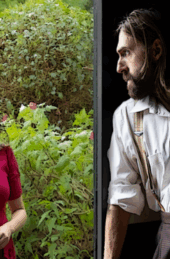When the Nightingale Sings is a novel based on the true story of Joan Curran, a Welsh physicist, and Hedy Lamarr, a Hollywood movie star whose scientific contributions changed the course of history and World War Two.
Joan Curran (represented in the story as the fictitious character Judy Morgan) was a shy Welsh Cambridge graduate when she started working for The Cavendish Lab in the late 1930s. During her time at the Cavendish, she made some of the most innovative scientific steps forward during the war. This included an ingenious way to confuse enemy radar with an invention called “chaff.” This was used very successfully on different campaigns. Codenamed Window, Joan developed technology that involved dropping bundles of aluminum strips from planes at specific intervals to confuse the enemy’s radar into believing there were more planes in the sky than there really were. This did well in Operation Gomorrah, a bombing campaign on Hamburg, and deployed in Operation Taxable as a strategic part of the D-Day landings.

Joan Curran
During her time at the Cavendish, she also worked on an early version of the proximity fuse, which enabled a ballistic missile to sense and explode close to a target. This technology became a critical defense for the British against the V-1 flying bomb. Later on in the war, Joan Curran went on to join the Manhattan project in America, working on developing the Atom Bomb that finally brought an end to the World War Two.
The other character in When the Nightingale Sings, who is acknowledged, is a 1940s Hollywood movie star, Hedy Lamarr, known as the most beautiful woman in the world. Hedy was an Austrian refugee who fled the war in Europe for America. She was a talented actress and an incredible inventor. In the early 1940s wanting to help with the war effort, she invented a secret communication system known as signal hopping. This allowed the allies to move the frequency of the controlling signal on their torpedoes, thus preventing the enemy from getting a firm lock and destroying them. This technology was developed into Cellular, Bluetooth, and Wi-Fi innovations that we all use today, though Hedy was never compensated for her invention.
When the Nightingale Sings combines both these amazing scientific women’s stories and discoveries into one fictitious relationship between them, which spans from the 1930s through to the 1990s – celebrating their lives and innovative contributions, which have gone unnoticed. When the Nightingale Sings serves as not only a story about enduring friendship and women struggling to break the glass ceiling or be taken seriously in what has been up to now a primarily male-dominated career, it will also hopefully be an inspiration to women working in the scientific fields today.
Suzanne Kelman is the author of Under a Sky on Fire and When We Were Brave. When the Nightingale Sings is her latest novel and is published by Bookouture.







